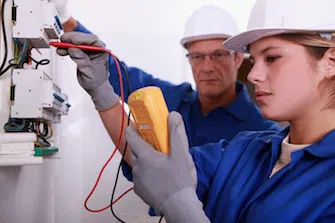The latest trends, technology advances, and simple best practices can cut costs by 30%.
Now, more than ever, it's time to take another look at how preventive maintenance can cut fleet-management costs. Though gas prices have dropped in many places to $2 or less a gallon in the last couple of months, don't expect them to stay that low. The long-term trend of rising gas prices is here to stay, and there's a looming possibility of a serious economic slowdown at the end of this year, and in 2007.
The U.S. Department of Energy expects the price of gas to jump back up to about $2.70 or more next year and to continue climbing as it has over the last decade because worldwide demand continues to outstrip supply. Just look back to 1996. At that time, a gallon of unleaded gas was $1.23.
In addition, some economists predict a full-blown recession next year, while others say we'll see a mild or moderate slowdown in some areas of the economy such as housing, manufacturing, and consumer spending. In September, Greg Hayes, vice president for finance at United Technologies Corp., told investors that the residential market for air conditioners has been hurt by the home construction slowdown.
While you cannot control the price of gas or the strength of the economy, you can control — and even significantly reduce — your fleet maintenance costs, which can help you remain profitable in the event of an economic slowdown. And if the slowdown never arrives, or is just a bump in the road, the money you save from a strong maintenance program can be used to capitalize on growth opportunities.
Diesel Comeback
With rising energy costs and fuel gobbling up an average of 30% to 35% of total fleet spend, hvacr contractors are looking for vehicles that can deliver high gas mileage and lower maintenance costs. For these reasons, diesel engines are making a comeback in the United States.
Thanks to technology advances, diesel engines are shedding their long-standing reputation as noisy engines that spew ominous black exhaust. Compared to the diesel engines of 10 years ago, today's diesels have 80% lower particulate emissions, 70% lower nitrogen-oxide emissions, and 15% improved fuel consumption, according to the Diesel Technology Forum, a Frederick, Md.-based non-profit group that promotes clean diesel technologies.
R.L. Polk & Co., a Southfield, Mich.-based automotive information firm, reports registration of diesel passenger vehicles — including cars, trucks, and SUVs — has grown by 80% since 2000, to more than 543,000 in 2005. Moreover, researchers at J.D. Power and Associates, a global marketing information firm in Westlake Village, Calif., predict that diesel sales will triple over the next 10 years, accounting for more than 10% of U.S vehicle sales by 2015, up from 3.6% in 2005.
Although technology has significantly reduced the pollution and noise of diesel engines, another reason sales are increasing is their gas mileage. They typically get 20% to 40% more miles to the gallon than a comparable gas-powered engine without sacrificing power or performance.
"There's been a resurgence of diesel engines in the light- and medium-duty trucks because they are generally cheaper to operate, and they can last for 200,000 or 300,000 miles if you have a good preventative-maintenance program," says Ronald G. Bredemeyer, a consultant in Abilene, Texas, who has 50 years of truck maintenance industry experience.
The drawback is that diesel vehicles are more expensive. The Dodge Sprinter van, which some hvacr operators are raving about, invoices in the range of $27,000 to $32,000. But it can get 24 miles per gallon (mpg) on the highway, and 22 mpg in the city, which is more than 40% more per gallon for gas-powered cargo vans sold by Ford Motor Co., GM, and GMC.
"Even though we don't love the price, we love them," says Hugh George, president of James River AC in Richmond, Va. "We're operating six of them right now, and two of my technicians like the vans so much that they've threatened to quit if we ever get rid of them."
In addition to higher fuel mileage, the Dodge Sprinter has fewer maintenance requirements. For example, the manufacturer says the Sprinter's standard oil change interval is 10,000 miles with normal driving conditions. The manufacturer also claims that its maintenance-monitoring system can extend the interval between oil changes to 20,000 miles.
GM, Ford, and Chrysler sell diesel-powered pickup trucks that get a respectable 18 mpg for highway and 13 mpg for city. Ford also offers a diesel option on its popular Econoline cargo van.
The increased demand for diesel trucks has automakers rolling out new models. GM recently unveiled a V8 diesel engine that reduces fuel consumption by 25%, produces 360 horsepower, and meets all upcoming emissions regulations. The engine will go into production on light-duty pickup trucks after 2009. Early next year, Ford will introduce what it calls its cleanest and quietest diesel engine ever for its 2008 F-Series super-duty truck. And the Chrysler Group's pickup-truck division announced it would introduce a turbocharged diesel for its Dodge Ram heavy-duty pickups in January.
Extending Oil Changes
For years, manufacturers have recommended an oil change every 3,000 miles. But those days are over. Mark Lange, customer service specialist for GE Commercial Finance Fleet Services in Eden Prairie, Minn., says GM and Chrysler have extended their oil-change intervals to 7,500 miles, while Ford will be making the same recommendation in 2008. That means fleet operators can reduce their oil-change cost by 50%. If your truck is equipped with an oil-monitoring system, you could save much more.
"The oil-monitoring system is standard equipment in most GM vehicles," Lange says. "What the oil-monitoring system allows you to do is ride the oil until the monitoring-system light comes on. GM is advertising that it would not be unheard of to drive 18,000 without an oil change under normal conditions."
A word of caution, however: Even with an oil-monitoring system, you still will need to check the oil regularly to ensure that the oil level doesn't fall so low that it hampers engine performance and fuel economy
Another way to reduce oil-change costs is to use synthetic oil, which generally provides advantages over conventional motor oils. Synthetic oil minimizes oil degrading, provides faster lubrication at engine start-up in low temperatures, keeps the engine cleaner, and improves engine efficiency.
"We used to change the oil on our 60-truck fleet every 4,000 miles," says Edd Hill, owner of HVAC Inc. in Bristol, Tenn. "When we switched to synthetic, we extended the oil changes to 8,000 and sometimes [to] 12,000, depending on the make of the vehicle and how hard it's driven." Even though synthetic is more expensive, Hill says his oil-change costs have declined.
Tire Technology
In August, Goodyear introduced a new generation of fuel-efficient tires — Fuel Max Technology — claiming they'll improve the fuel economy of your fleet. Test results conducted by the Society of Automotive Engineers show the new line of tires increased fuel economy by about 4% compared to standard Goodyear over-the-road tires.
In general, however, fuel-efficient tires will wear faster than standard tires, Goodyear admits. But over the past few years, improving technology has reduced the tread-wear gap between the two types of tires. Nevertheless, if you need to replace the fuel-efficient tires more frequently, that cost may be more than the fuel savings the tires reportedly provide.
Because oil is used to manufacture tires, replacement-tire costs have been rising. To address this issue with its maintenance-management clients, who include hvacr owners, GE developed an online purchasing tool that provides customers with lower-priced tire alternatives, while retaining high-quality safety standards. GE says it has increased customer savings by an average of 50% by leveraging its pricing knowledge in negotiations with tire vendors.
Inflating your fleet's tires with nitrogen is another way to reduce the cost of maintenance. Ingersoll-Rand Co., which manufactures nitrogen tire-inflation
systems, claims that nitrogen holds tire pressure longer than air. The company points out that the nitrogen molecules are bigger than air molecules, and so they leak out of the tire more slowly. That's important because maintaining tire pressure can boost fuel economy by as much as 6%.
Proponents also say nitrogen can extend the tread life of your tires and slow the aging of the tire's rubber components. Slower aging, in turn, lengthens the tire's core life, which can yield extra retreads and further cut your fleet maintenance costs.
Nitrogen has been used for years to inflate tires on commercial and military aircraft, racecars, and off-road equipment. However, a report by the Pacific Grove, Calif.-based Tire Retread Information Bureau (TRIB), a non-profit industry association dedicated to the recycling of tires, suggests that using nitrogen to inflate tires on passenger cars and commercial trucks is an emerging trend. "More and more nitrogen-filling facilities are appearing nationwide as on-site nitrogen generators have become more affordable, and as more manufacturers of nitrogen generators have entered the marketplace," the TRIB report says. For example, customers of Costco wholesale retail centers, some car dealerships, independent auto shops, and auto retail stores can pull up to nitrogen generators to fill their tires. Reportedly, a nitrogen fill-up will cost you about $10 per tire.
If you operate a large fleet, it may be cost effective to buy a nitrogen generator. In addition to Ingersoll-Rand, Parker Hannifin and Branick Industries are among several companies that make nitrogen tire-inflation systems.
Of course, maintaining the proper tire pressure by filling with air also maximizes fuel efficiency. But it's only effective if your technicians check the tire pressure regularly, or every-other time they fill up the gas tank.


